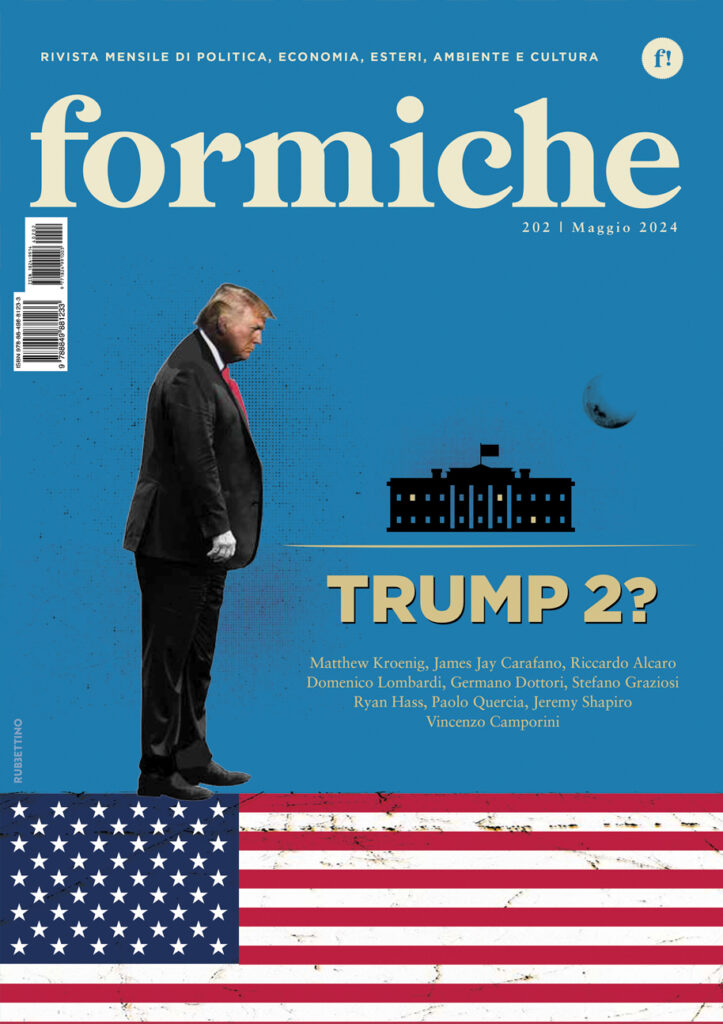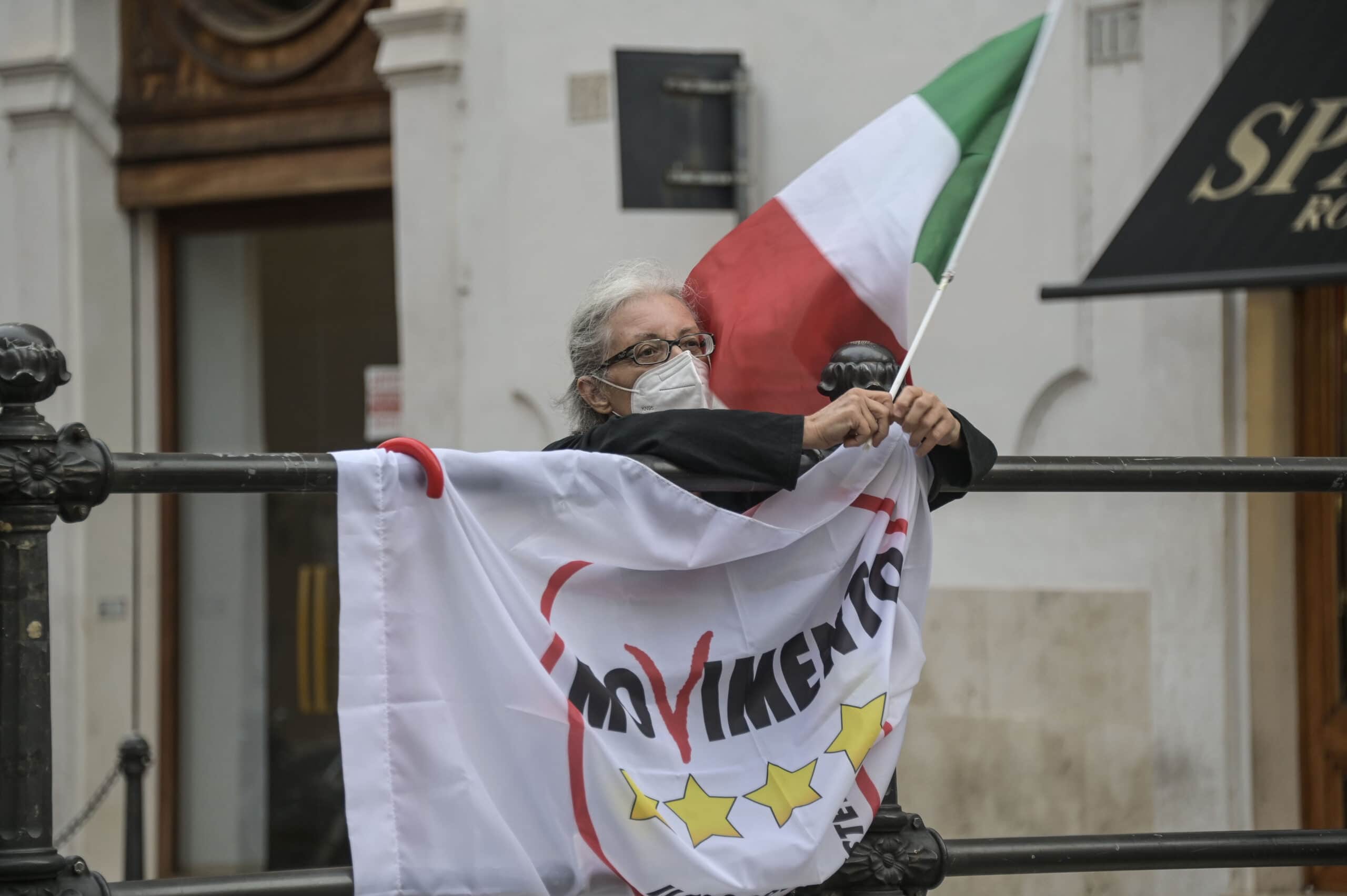Following a turn in the Movement’s fortunes, a new study conducted on party members charts a possible route to evolution. Also, we interviewed its author
At the height of an identity crisis, Italy’s ruling 5 Star Movement (5SM) understood the urgency of a reassessment. On Monday, sociologist Domenico De Masi shared the results of an internal study of the Movement that takes stock of where its members sit on a series of issues and what they think is the best way forward.
How they got here
It has been a topsy-turvy couple of years for the 5SM, the anti-establishment and populist grassroots movement that became a governing party. Its staggering popularity level has been waning ever since, internal fighting and defections are fracturing its integrity, and its members have been virtually leaderless for almost a year now.
The 5SM’s path in government began after the 2018 elections, when at the height of its 32% consensus it teamed up with Matteo Salvini’s hard-right League to form a ruling coalition that lasted just about one year. The two parties cracked down on immigration, instituted welfare State measures and cozied up to China while diverging from the EU and Atlantic alliances.
Then Mr Salvini called off the alliance and attempted to force elections, which in turn cause the 5SM to team up with the left wing Democratic Party, once their sword enemies, and build the current coalition government while keeping the same prime minister, Giuseppe Conte. Since then, Italian policies have moved leftwards.
5SM voters didn’t take well to the institutionalisation of the post-ideologic movement that once vowed to do away with traditional parties. Support for the Movement halved. Many 5SM MPs flocked to the League, currently at the opposition, and others simply jumped ship.
Last December, the Movement’s political head Luigi Di Maio gave up his role to Vito Crimi, a temporary leader that was supposed to be in charge until 5S MPs decided on the form of their future leadership – something that’s supposed to happen in mid-November.
The study’s findings
The study, titled “Political culture of the 5 Star Movement after coronavirus”, was commissioned by the Movement itself in the early stages of the pandemic. Its aim is to photograph the state of the party, which has considerably changed in the past years, according to Mr De Masi.
The sociologist found a “great convergence of the [Movement’s] different souls” despite the remarkable differences between interviewees. In short, Mr De Masi told us, 5 Star MPs agree on most of the issues they’re presented with, and some of their general views have shifted quite dramatically.
For starters, the Movement is now “far more Europhile than we could imagine” and keener on traditional alliances. Their stance on migration has changed, too, as they now deem immigrants as a resource to contrast the fall in Italian births and its impact on its ageing workforce.
Moreover, 5S interviewees now place great importance on competence and intellectuals, two categories that they once flouted with the slogan “one is worth one.” They also veered away from “happy economic degrowth” although they still think that “real economy” should be prioritised over financial economy (i.e. they oppose unfettered neoliberism).
They showed optimism for scientific progress but understood that it will eventually lead to loss of workplaces – which is why they still stand behind their flagship welfare measures, such as universal basic income. They also agreed that environment and sustainability must be placed front and centre.
The Movement still rejects being branded as a party or categorised into the political spectrum. 5S members see themselves as the “third way,” although Mr De Masi described the Movement’s brand of socialism as “liberal and social-democratic.” This leftist turn is understandable, he said, considering that “right-leaning MPs are all with [Mr] Salvini now.”
Finally, 5S members expressed a strong preference for a leadership made up by a small congress of members, without a single leader.
Why it matters
Ideology has always been at the heart of the 5SM, but its orthodox version is ill-fitted for a governing party – which explains the Movement’s awkwardness in picking a consistent line in the past years. Its members, once all united in protesting the “élites,” have been coming to terms with being the ruling class.
The 5S know they must evolve, not least because until the next elections occur (in 2023) they are still the majority party in Parliament. Temporary leader Crimi knows he has been procrastinating an internal meeting long enough, what with the pandemic and the September regional elections; the latest date he gave for that is mid-November.
Hopefully, that meeting will result in major decisions as to the nature of the Movement, its leadership and its objectives. This study poses the building blocks for that conversation, indicating which are the areas of agreement to flesh out a new and improved political philosophy.
This will be necessary to re-unite a party that is bitterly divided between pro-government (and pro-alliance) and orthodox MPs. Which in turn means that if the 5S cannot manage to come together, their instability could wreak havoc in their alliance with the Dems.
But the stakes are higher than that because Italy is currently in the process of charting a course for the next decade. This government’s choices will directly impact the country’s recovery from the pandemic, and its economic outlook for the next decade at least.
The ESM knot
Despite the 5S coming closer to the Dems’ brand of politics, there are still issues that are potentially capable of breaking the coalition – the ESM first and foremost. That’s a debate on whether to accept a €37 bn European loan at favourable rates to finance Italy’s health service.
Soon after Mr Conte seemed to favour the 5SM’s line (i.e. not taking the funds) several MPs reacted by creating a cross-partisan group, self-explanatorily called “ESM immediately”. The group includes MPs from the governing coalition and the Dems’ second-in-command Andrea Orlando, as well as some opposition MPs.
More extraordinarily, the above were joined by 5SM’s own Giorgio Trizzino, an event in itself, as the MP is the first in his party to express favour for the ESM. This could signal an opening in the Movement, who until now has opposed a strenuous and preconceived resistance to the fund – perhaps an aftermath of their (faded?) Euroscepticism.
When we reached him, he said that he believes the Movement would align with the PM if the latter became convinced. This may well be the event that manages to stabilise the government, although it’s too early to tell – and the 5S are bound to push back against the Dems’ pressing to accept it.
On Wednesday Mr Di Maio issued a statement defending Mr Conte’s indication that Italy will not be taking the ESM funds, despite the latter walked back on that following Democratic backlash. Still, Mr Di Maio is perhaps the most influential 5S leader at the moment. His statement indicates that internal government hostilities are far from over.








